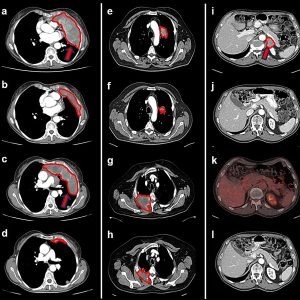
A new AI-based software has been developed that can be integrated with an ultrasound device to “guide” childbirth by providing precise, real-time information on the baby’s head position. It can clearly indicate to operators—using a traffic light system—whether to proceed with a natural descent in the birth canal, whether to use a vacuum extractor, or even whether an emergency cesarean is needed.
This tool, which could be available in delivery rooms starting in 2028, was developed and validated as part of a study published in The European Journal of Obstetrics & Gynecology and Reproductive Biology, and coordinated by Professor Tullio Ghi, who is now full professor of Gynecology and Obstetrics at the Catholic University of Rome and Director of the Obstetrics Unit at the Fondazione Policlinico Universitario Agostino Gemelli IRCCS in Rome.
The journey of the fetus through the birth canal can be fraught with obstacles and risks. Fetal malposition—a condition where the fetus’s occiput is oriented toward the sacrum rather than the mother’s pubic bone—is among the most common causes of prolonged or halted labor progression. Depending on how the baby’s head is positioned during descent, it may be necessary to use a vacuum extractor to facilitate delivery, or in more difficult cases, to resort to an emergency cesarean to ensure a safe delivery for both mother and child.
Assessing the baby’s head position can be challenging, even for experienced practitioners, Professor Ghi explains. When practitioners make evaluations by using hands, there is a one-in-five chance of error, which could lead to incorrect placement of the vacuum extractor, resulting in failed extraction, prolonged labor, and in the worst cases, delayed delivery of a baby in distress. Ultrasound helps doctors accurately assess head position before using a vacuum extractor, but not all delivery room operators are able to use ultrasound effectively to obtain precise information.
The AI-based software uses ultrasound images to provide precise, real-time responses to operators, displaying the “verdict” as a traffic light: red if it is not appropriate to proceed with the vacuum and an emergency cesarean should be considered; green if it is safe to proceed with the vacuum; and yellow if the situation is uncertain.
In the multicenter study, the software has been validated so far using 2,154 ultrasound images from 16 centers worldwide. The overall performance of the model in classifying fetal head position was excellent, Professor Ghi says, with an overall accuracy of 94.5% and a sensitivity of 95.6% (ability to detect head malposition).
Professor Ghi notes, “We have developed an AI model applied to ultrasound that can automatically assess fetal head position during childbirth within a fraction of a second, with excellent overall accuracy. In the future we will validate our model on large patient populations before it can be introduced into routine clinical practice, but we believe that if results remain positive, the software could become part of clinical practice within 3-4 years,” he concludes.
More information:
Ruben Ramirez Zegarra et al, A deep learning approach to identify the fetal head position using transperineal ultrasound during labor, European Journal of Obstetrics & Gynecology and Reproductive Biology (2024). DOI: 10.1016/j.ejogrb.2024.08.012
Citation:
AI-based software ‘guides’ childbirth by determining the baby’s position in real time (2024, November 11)
retrieved 11 November 2024
from https://medicalxpress.com/news/2024-11-ai-based-software-childbirth-baby.html
This document is subject to copyright. Apart from any fair dealing for the purpose of private study or research, no
part may be reproduced without the written permission. The content is provided for information purposes only.








